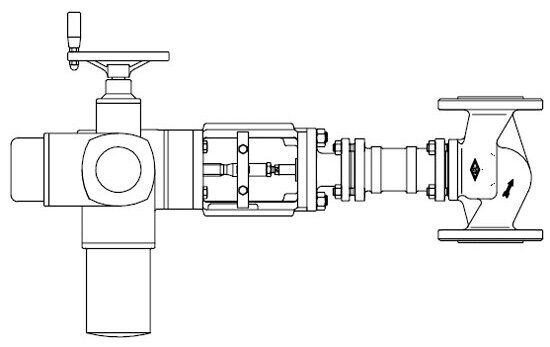Understanding Electric Actuators in Industrial Automation Systems
On this page
Installation of electric actuators is an integral component of modern industrial automation control systems. Its role lies in using electrical power to drive the opening, closing, or modulation of valves, thereby facilitating control over the flow of fluid media within pipelines. In industrial production and pipeline transportation, the switching status and regulation precision of control valves play a crucial role in ensuring the safety, stability, and efficiency of the entire system. The electric actuator, serving as the driving device for control valves, undertakes the vital task of implementing program control, self-control, and remote control of these valves.
Electric actuators typically consist of several key components, each playing an indispensable role in ensuring the proper operation of valves.
Specialized Electric Motor: Possessing characteristics such as strong overload capacity, high starting torque, and low rotational inertia, suitable for short-duration or intermittent operation. This type of motor provides sufficient power to ensure the stable and reliable operation of valves under various conditions.
Gear Mechanism: Used to reduce the output speed of the electric motor, thereby increasing torque and reducing speed, ensuring a smoother and more precise opening and closing process for valves.
Stroke Control Mechanism: Achieves precise control over the opening and closing positions of valves, enabling accurate regulation of fluid media flow. This part typically includes sensors, control valves, and feedback devices, allowing real-time monitoring of valve positions and adjustments.
Torque Limiting Mechanism: Adjusts torque or thrust to ensure it does not exceed predetermined values. This function effectively protects valves and actuators from external disturbances, thereby extending their service life.
Manual/Electric Switching Mechanism: Enables manual operation when necessary, ensuring system reliability and safety during power failures or emergencies.
Position Indicator: Displays the specific position of valves during the opening and closing process, aiding operators in real-time monitoring and control of valve status.
Choosing the appropriate electric actuator is particularly important depending on the type of valve and its application.
1. Rotary Electric Actuators: Suitable for butterfly valves, ball valves, plug valves, etc. Their output shaft rotation range is less than 360 degrees, usually 90 degrees, enabling quick and precise valve opening and closing. Depending on the device interface, direct-mounted or base-crank types can be selected.
2. Multi-Turn Electric Actuators: Suitable for gate valves, globe valves, etc. Their output shaft rotation range exceeds 360 degrees, usually requiring multiple turns to complete the valve opening and closing process.
3. Linear Electric Actuators: Suitable for single-seated control valves, double-seated control valves, etc. They operate in a linear motion, facilitating precise adjustment and control of valves.
Lastly, when selecting electric actuators, it is essential to determine the control form based on specific process control requirements. Different process processes may necessitate different control strategies and parameter settings. Therefore, in selecting electric actuators, careful consideration of the overall system design and operational requirements is crucial.
Electric actuators are crucial in modern industrial automation. Their precision ensures reliable valve operation and fluid control. Matching the right actuator type to process needs is vital for system safety and efficiency. Proper configuration enables smooth operations, ensuring operator safety and convenience in industrial production and pipeline transportation.

